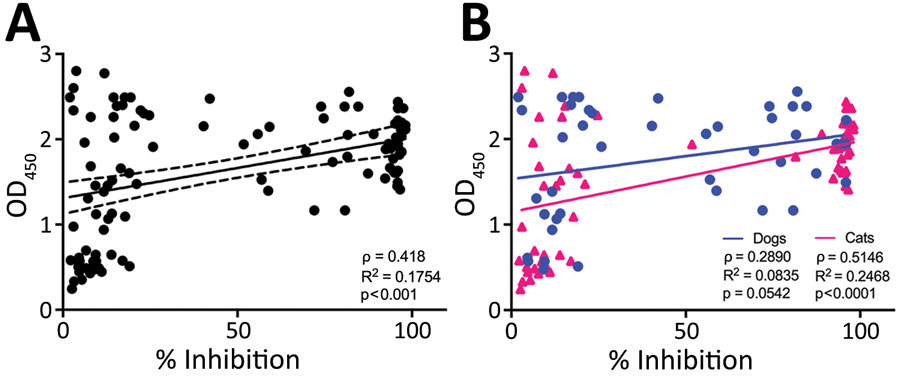Volume 28, Number 6—June 2022
Research
Risk Factors for SARS-CoV-2 Infection and Illness in Cats and Dogs1
Figure 3

Figure 3. Results of IgG ELISA in relation to percentage inhibition of binding of the SARS-CoV-2 receptor binding domain (RBD) to the ACE2 receptor in cat and dog serum samples measured with a surrogate virus neutralization assay, Ontario, Canada. A) Surrogate virus neutralization test results correlated with IgG ELISA results. B) Percentage of inhibition for dog (blue circles) and cat (pink triangles) samples. The solid line shows correlation and dashed lines 95% CI. Correlation is higher for cat than dog samples. OD450, optical density at 450 nm.
1Preliminary results from this study were presented at the 30th (September 23–25, 2020) and 31st (July 9–12, 2021) European Congress of Clinical Microbiology and Infectious Diseases.
Page created: April 28, 2022
Page updated: May 22, 2022
Page reviewed: May 22, 2022
The conclusions, findings, and opinions expressed by authors contributing to this journal do not necessarily reflect the official position of the U.S. Department of Health and Human Services, the Public Health Service, the Centers for Disease Control and Prevention, or the authors' affiliated institutions. Use of trade names is for identification only and does not imply endorsement by any of the groups named above.